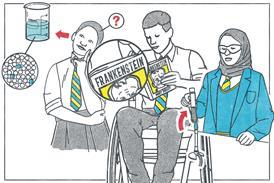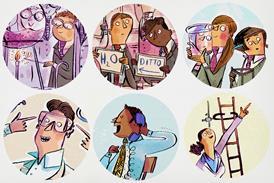From monkeys to mnemonics, peanuts to prefixes, strategies guaranteed to help all learners get to grips with the huge and complex vocabulary of science

As a teacher, I want all the children in my classes to feel successful and to enjoy science. This is not possible if they cannot access the content. In my setting 41% of students have special educational needs (SEN) and 30% English as an additional language (EAL), so that increases the challenge. Students struggle to understand tier 2 words (high frequency, found across all subjects) let alone tier 3 (subject-specific vocabulary).
Here are four strategies I’ve found useful in helping all students better understand scientific terminology.
1. Etymology
1. Use prefixes and suffixes
Understanding the origins of words and word parts can help students identify recurring prefixes, roots and suffixes. When they encounter these again, they are halfway to understanding an unfamiliar word. For example, the prefix glyc- means sweet; this knowledge helps them when they encounter glycogen, glycolysis, glycolipid etc.
In class discussions, I remind students where we have previously seen the prefix or suffix. I ask them to tell me the words they already know. With photosynthesis, I ask what other words begin with photo. They’ll usually come back with photograph. Then I can ask them how a camera takes a photograph, and eventually we work out together that the common theme is light.
Read more about the structure and origin of words for teaching science vocabulary and check out this pdf list of useful root words in chemistry.
2. Mnemonics
2. Make meaningful mnemonics
Memory aids, or mnemonics, can help with remembering sequences and the order of processes – vital with huge science curriculums.
I’ve seen learners write ‘PANIC. Positive Anode, Negative Is Cathode’ on tests and in exercise books when working through questions. I’ll always give them a sticker or a smiley face.
It is important to think about whether mnemonics are fit for purpose. Richard Of York Gave Battle In Vain works for people my age (50s) but might mean nothing to a child, especially if English is not their first language. Encourage students to make up their own, more meaningful mnemonics, or they are unlikely to remember them.
As soon as I describe a new concept to the class, I write the mnemonic on the board, leave it on there for the duration of the lesson and frequently refer to it. At the start of the next lesson, I ask the students if they remember what it stands for.
Discover your fellow teachers’ favourite mnemonics for teaching chemistry.
3. Expressiveness
3. Be silly, but enunciate
In my classroom, expressiveness is also known as being silly. And I often combine it with other techniques, such as mnemonics.
When teaching the homologous series, I introduce learners to the mnemonic, Monkeys Eat Peanut Butter for methane, ethane, propane and butane. Explaining the difference between glucose, glucagon and glycogen, I use a silly voice to exclaim, ‘Oh no, glucagon!’ while shrugging and explaining that glucagon is the hormone released when blood glucose is low.
I truly believe you do not need to be ‘posh’ to be a teacher, but it is important to speak clearly. I over-enunciate in all my interactions with my classes, from the moment I say good morning until the second I wave them out of the classroom. It may feel performative, but I’m rarely asked to repeat words.
4. Links
4. Make cross-curricular links
Emphasise the cross-curricular. Many of the key terms in chemistry crop up in PE and geography. I take time to explicitly point out the shared vocabulary between subjects. For example, anaerobic respiration in PE, adaptation in geography.
Not every chemistry concept has an obvious cross-curricular link, but where possible I include links in the planning stage of my lessons to ensure I do not forget to mention them. I also ask the students if they have heard words before and in what context. Sometimes our EAL students will tell me what the word is in their language which helps their fellow students.
When it works and when it doesn’t
Seeing students’ written work, with prefixes, mnemonics and other things that I’ve taught them jotted in the margin brings me such joy. Equally, I have seen misinterpretations, ‘buds and burner’ for Bunsen burner and ‘Losing something in the lab’ as a definition for displacement reaction. This is why we must check for understanding.
The teaching techniques that benefit our SEN and EAL students benefit everyone. Nobody has ever complained I’m explaining things too clearly.
Find articles and classroom resources to embed literacy into your teaching and develop learners’ skills.
Simone Lively
Discover many more articles and classroom resources for embedding literacy into your science teaching: rsc.li/44CwuH5











No comments yet